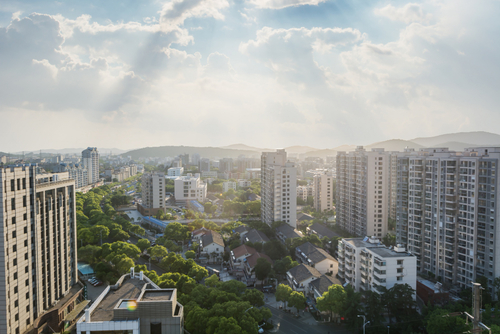What Exactly Is HDB's New Flat Classification (Standard, Plus & Prime)?
Learn more about HDB's latest flat classification scheme - Standard, Plus, and Prime. Understand their differences and how they affect you.

You may already be somewhat familiar with the Prime Location Housing (PLH) scheme that was introduced in the November 2021 BTO project.
But did you know that HDB flats in Singapore will be further classified as Standard, Plus, or Prime from the second half of 2024? What do these changes mean for potential and current homeowners?
Here’s what you need to know about the replacement of the old mature versus non-mature estates distinction and how they impact you.

Standard, Prime & Plus HDB Flats
Under the revamped classification system, HDB flats are now categorised into three distinct tiers: Standard, Plus, or Prime. Each classification comes with its unique set of characteristics and eligibility criteria to suit the preferences of potential and current homeowners.
HDB Flat Classifications
| Standard Flat | Plus Flat | Prime Flat | |
|---|---|---|---|
| Location | Islandwide | Choicer location near essential amenities, such as MRT stations and town centres (e.g. Bayshore and Mount Pleasant) | Choicest locations (e.g. city centre and Greater Southern Waterfront) |
| Minimum Occupancy Period (MOP) | 5 years | 10 years | 10 years |
| Subsidies | Standard amount of subsidies (no subsidy recovery after selling the flat) | More subsidies (lower subsidy recovery after selling the flat) | Most subsidies (highest subsidy recovery after selling the flat) |
| Rental of flat | Can rent out the entire flat | Cannot rent out the entire flat | Cannot rent out the entire flat |
| Income Restrictions | No income restrictions for resale flat buyers | Income ceiling of S$14,000 for both singles and families | Income ceiling of S$7,000 for singles and S$14,000 for families |
Follow us on Instagram: @daretofinance
Why The Change In HDB Flat Classification To Standard, Plus, Or Prime
The main reason is that the old way of classifying estates as mature or non-mature was outdated. This is especially so with the upcoming developments around Singapore, such as the Woodlands RTS Link and Jurong Lake District. The mature/non-mature classification doesn’t make sense anymore because Singapore is decentralising— meaning there would eventually be no more non-mature areas.
Also, certain flats in non-mature estates are actually highly sought after by home buyers. For instance, the 4-room BTO flats in Hougang saw an application rate of 4.6 for first-timer families in the February 2024 launch, exceeding the demand in mature estates like Bedok and Queenstown.
Additionally, the old classification doesn’t mean much in big HDB towns like Tampines and Toa Payoh. Even though Tampines is considered mature, central Tampines with malls, offices, and the MRT is more well-connected than other parts of Tampines (e.g areas around IKEA).
Overall, it’s simply fairer to classify flats based on how close they are to useful amenities like malls and transport, rather than just how old the estate is.

Impact on Potential & Current Homeowners
However, this implementation of the new HDB flat classification system has several knock-on effects worth noting.

1. Mitigating Windfall Effects
Gone are the days of buying and selling BTO flats for a quick profit shortly after the Minimum Occupation Period (MOP) ends. The government aims to mitigate speculation and house-flipping with this policy change because with stricter criteria that extends to both new and resale flat owners, the pool of buyers for Plus and Prime flats will be lesser, leading to potentially slower resale price growth.

2. Higher Chances To Get A BTO Flat
For genuine homebuyers who intend to live in the Plus and Prime flats for the long-term, you’re in luck. By introducing longer MOPs and subsidy recovery, many individuals will be discouraged from applying for these BTO flats, particularly those seeking short-term investment or quick resale. This will decrease competition for the Prime and Plus flats, with those applying for it viewing their BTO flats as homes rather than investments. This helps to address some of the demand-supply issue in the public housing market and is definitely better for the majority of Singaporeans in the long-term.

3. Enhanced Accessibility for Singles
Singles, rejoice! With HDB’s new classification, eligible first-timer singles will no longer be confined to buy only 2-room Flexi BTO units in non-mature estates. You can now apply for a new 2-room Flexi BTO flat in all locations across Standard, Plus and Prime housing projects. Prefer to go the resale route? You can also buy a 2-room Prime flat or a Standard or Plus flat of any size in the resale market (although this will only be possible once the first batch of Plus and Prime flats reaches their MOP ten years later).

4. Increase in prices for existing HDB flats in prime locations
The new classification will only be implemented for BTO projects from the second half of 2024. As such, existing flats which have already been launched by HDB will not be affected by these new restrictions. With stricter eligibility for Plus and Prime BTO flats, some potential buyers who might have otherwise opted for BTOs in prime locations might shift their focus to the resale market, increasing demand and drive up prices for resale flats in the “prime” areas.

Looking Ahead
The introduction of the Standard, Plus, and Prime classification system marks a significant shift in Singapore’s public housing landscape. While it might come with some adjustments for potential buyers, the changes are ultimately aimed at promoting long-term homeownership and a fairer distribution of resources – which is definitely better for the majority of Singaporeans in the long-term. However, with the longer MOP, it will take more than 10 years before the first Prime and Plus flats are available in the resale market. This raises a crucial question: Will this new system truly achieve its intended goals or will it simply create a new set of challenges? Only time will tell.